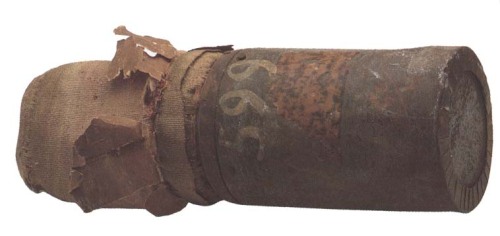thecivilwarparlor:Effects of Canister Shot in the Civil WarThis skull was discovered in 1876 on Morr
thecivilwarparlor:Effects of Canister Shot in the Civil WarThis skull was discovered in 1876 on Morris Island, South Carolina, near the site of Battery Wagner, a powerful earthwork fort that had protected the entrance to Charleston Harbor during the Civil War.The skull belonged to a man of African descent—a soldier of the famous 54th Massachusetts Volunteers, which had led the assault on Wagner on the night of July 18, 1863. Of approximately 600 men who made the charge, 256 were killed, wounded, or missing.From the size of the wound, and the remains of the projectile itself, it can be determined what type of munition hit this man: an iron canister ball from one of two field howitzers known to have been used in the repulse of that attack. Had the 54th charged straight ahead, it would have been up and over and right into the heart of the fort. Unfortunately, commander Colonel Robert G. Shaw led the regiment to the left, against the lower, but heavily defended, center of the wall. Besides the four 32-pounders directly ahead, the mass of attacking men was subject to enfilading fire from the two recovered field howitzers above them. The regiment clung to the face of the fort for almost an hour, but eventually had to retire. Approximately 6000 more Union troops eventually were thrown into the battle to no avail. Wagner remained in Confederate hands for another four months, then was evacuated when its purpose had been achieved.Source Credit: http://www.medicalmuseum.mil/index.cfm?p=exhibits.canistershotcivilwar.index This Web site provides an introduction to the National Museum of Health and Medicine (NMHM) and contains official Government information. Its use is intended for members of the general public, news media and Army Medical Department beneficiaries.Second Photo: Confederate 12 lb Canister Round. -- source link
#military#histry#cannon#civil war

